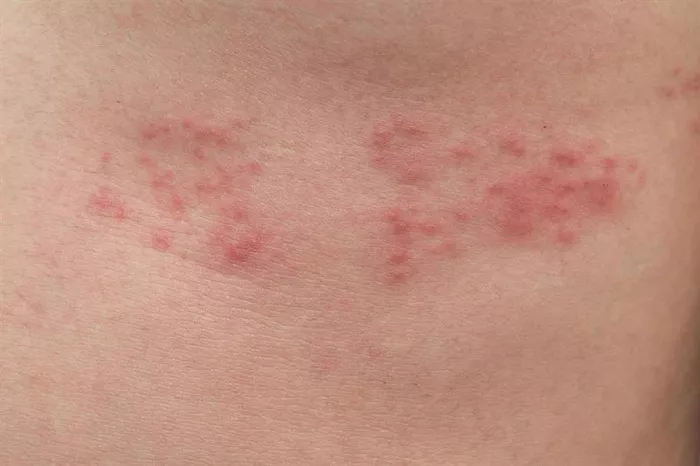Shingles, a painful condition caused by the same virus responsible for chickenpox, continues to challenge medical professionals, but new research offers hope, particularly for those facing eye complications due to the disease.
While established treatments, including a highly effective vaccine, have long been available for shingles, recent findings from the University of Pennsylvania and New York University (NYU) are shedding light on potential new ways to address one of the more serious consequences of the virus—eye complications.
Understanding Shingles and Its Causes
Shingles, also known as herpes zoster, is triggered by the varicella-zoster virus, which remains dormant in the nerve cells of individuals who have had chickenpox. For reasons not yet fully understood, the virus can reactivate later in life, typically after the age of 50, leading to shingles.
Fred Burke, MD, an emergency medicine physician with OSF HealthCare, explains that shingles manifests as a painful, localized blistering rash, often accompanied by intense nerve pain. The rash typically lasts three to five weeks, and antiviral medications are used to manage the condition if caught early.
“Early intervention is crucial,” Dr. Burke advises. “Once the rash has crusted over, antiviral treatments become less effective. At that point, pain management becomes the primary focus, although the infection is no longer contagious.”
Though the disease mainly affects older adults, individuals with weakened immune systems—such as cancer patients or organ transplant recipients—are also at increased risk. The virus spreads through the air or via direct contact, much like chickenpox.
In some cases, the pain associated with shingles can persist for months or even years, a condition known as neuropathic pain. Other complications, such as meningitis and facial paralysis, can also arise.
Eye Complications and Herpes Zoster Ophthalmicus
One of the most concerning complications of shingles is its potential to affect the eyes. Herpes zoster ophthalmicus (HZO), as it is called, can lead to symptoms like redness, swelling, itching, and, in severe cases, impaired vision. According to Dr. Burke, prompt treatment with antiviral medications is crucial, and consultation with an ophthalmologist is often necessary. Steroids may also be required to reduce inflammation.
“If left untreated, HZO can result in permanent vision loss,” Dr. Burke warns. “That’s why early intervention is critical.”
New Research Offers Hope
A groundbreaking study led by Elisabeth J. Cohen, MD, a professor of ophthalmology at NYU, is offering new insights into the long-term treatment of eye complications from shingles. Dr. Cohen’s research focused on the antiviral drug valacyclovir, which is traditionally prescribed for short-term use. The study, which followed patients for 18 months, found that extending valacyclovir treatment for a year reduced the risk of new or worsening eye disease by 26 percent. Additionally, patients who received the extended treatment had a 30 percent lower chance of experiencing multiple HZO flare-ups.
Dr. Burke, who reviewed the study findings, expressed his optimism about the results. “I was very, very impressed by the findings. It suggests that prolonged antiviral therapy could be an important strategy for preventing long-term eye damage in those with shingles.”
While Dr. Burke emphasizes that more research is needed to fully understand the benefits of extended valacyclovir use, the study offers promising new options for patients suffering from shingles-related eye complications.
Vaccination Remains Key
Although the new research is promising, Dr. Burke underscores the importance of prevention, particularly through vaccination. The CDC recommends that children receive the chickenpox vaccine, which is effective in preventing the disease and, by extension, shingles later in life. Adults who have not previously contracted chickenpox or received the vaccine are also advised to get vaccinated.
For those over 50, the shingles vaccine provides strong protection against the virus. Dr. Burke notes that the two-dose shingles vaccine is recommended for healthy adults aged 50 and older, as well as for individuals aged 19 and older with weakened immune systems.
“The shingles vaccine is 90% effective in preventing the disease,” Dr. Burke says. “It’s an important tool in reducing the risk of both the acute pain and long-term complications associated with shingles, including eye issues.”
Despite the effectiveness of the vaccine, Dr. Burke cautions that individuals who never had chickenpox as children remain at risk for both chickenpox and shingles later in life. “It’s the same virus,” he explains. “You could catch chickenpox as an adult and, later on, develop shingles.”
Looking Ahead
As research into shingles treatment continues to evolve, the hope is that new treatments, including long-term antiviral options, can significantly reduce the risk of complications like vision loss. In the meantime, vaccination remains the most effective means of preventing shingles and its potential complications.
As experts continue to explore new ways to treat the disease, the latest studies offer renewed hope for patients seeking relief from the painful and often debilitating effects of shingles, particularly when it comes to protecting one of our most vital senses—sight.
Related topics:



























